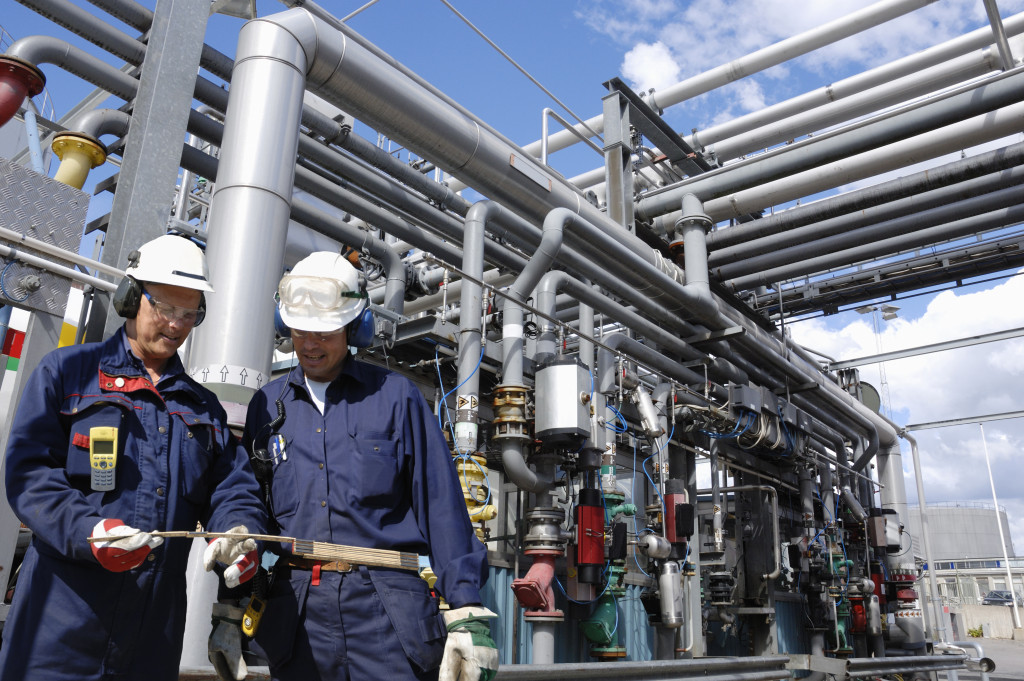• Develop a comprehensive safety plan to ensure employee conduct and safety gear is in place.
• Establish clear protocols for operating machinery, handling hazardous materials, and investing in technology.
• Invest in security equipment such as CCTV cameras, alarms, access control systems, and biometric systems.
• Install diagnostic sensors for regular readings of temperature, pressure, and other conditions.
• Enforce rules and regulations for employees, visitors, and any unauthorized items entering the premises.
As a business owner, you are responsible for ensuring that your employees and customers are safe in your industrial factory. It’s true that safety and security are essential for any business, but significantly more so for those in the industrial sector. For that reason, here are some tips on how you can maintain these two factors in your factory.
Developing a Comprehensive Safety Plan
The first step towards maintaining safety and security in your industrial factory is to develop a comprehensive safety plan. This written document should include information on all safety protocols, emergency procedures, and other preventive measures that must be taken to ensure a safe working environment. Here are some examples:
Employee Conduct and Safety Gear
To help ensure a safe working environment for all employees in your industrial factory, it is crucial to establish a clear set of employee conduct protocols and require that all staff wear the necessary safety gear.
This includes ensuring that all appropriate safety equipment, such as protective gloves, goggles, and face masks, are being used appropriately at all times. Additionally, all necessary safety protocols must be adequately documented and communicated to employees.
Protocols For Operating Machinery
Another critical step to maintaining safety and security in your industrial factory is developing clear protocols for operating machinery. Machines should be regularly maintained and inspected, and operators must be properly trained on the necessary safety precautions before operating them.
Handling of Hazardous Materials
If your industrial factory works with hazardous materials, it is vital that strict protocols are put in place to ensure their safe handling. This includes enforcing proper storage and labeling of all hazardous materials and providing employees with the necessary safety gear and training to help them avoid any potential accidents or injuries.

Investing in Technology
Another way to maintain safety and security in an industrial factory is to invest in the latest safety and security technology. Investing in these innovative solutions will allow you to monitor the premises at all times, detect suspicious activity quickly, and prevent any unwanted accidents. Here are some equipment to invest in:
Security Equipment
Security equipment is one of the most important pieces of equipment for maintaining safety and security in an industrial factory. This can include CCTV cameras, alarms, and access control systems to help monitor the premises at all times.
Additionally, investing in technology such as facial recognition systems or license plate readers can help quickly identify suspicious activity. Furthermore, biometric systems, such as fingerprint or retina scanners, are great for providing restricted access to secure areas.
Safety Light Curtain
Another essential piece of technology to invest in is an efficient safety light curtain. This device can be used as an additional layer of security at entrance/exit points, and it can also act as a physical barrier to help prevent any hazardous materials from leaving the factory premises. It involves the use of infrared sensors and will turn off the power to any machine if a presence is detected where it should not be.
Diagnostic Sensors
Installing diagnostic sensors in your factory can help to detect any potential safety risks before they become a severe problem. These sensors work by taking regular readings of the temperature, pressure, and other conditions inside the factory and alerting you of any irregularities or changes in these readings.

Enforcing Rules and Regulations
Finally, enforcing rules and regulations within the facility is also important for ensuring safety and security. Ensure that all employees know any specific rules or regulations regarding their behavior while at work — such as no smoking or cell phone use.
This way, they will understand what is expected of them when it comes to following protocol while on the job site. Likewise, it is also important to have a clear policy on the consequences if an employee fails to comply with any of these rules.
Additionally, make sure that any visitors who enter the premises comply with any necessary rules or regulations, such as wearing protective gear when entering certain areas of the facility or refraining from bringing unauthorized items onto the premises.
Maintaining safety and security in an industrial setting requires careful planning and implementation of specific protocols designed to protect employees and customers alike from potential hazards or criminal activity within the facility. By developing a comprehensive safety plan, investing in appropriate security technology, and enforcing rules within the workplace, you can ensure that your industrial factory remains secure at all times while still creating an environment where employees feel comfortable coming to work every day knowing their well-being is being looked after by their employer.

